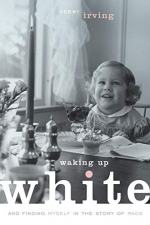
|
| Name: _________________________ | Period: ___________________ |
This test consists of 15 multiple choice questions and 5 short answer questions.
Multiple Choice Questions
1. When Irving was not yet ready to examine her own white privilege, which other quality of her identity did she decide to start with?
(a) Her status as a holder of a graduate degree.
(b) Her able-bodied status.
(c) Her status as a woman.
(d) Her status as a mother.
2. In Chapter 15: The Whole Story, Irving warns the reader of the dangers associated with what types of stories?
(a) Second-hand.
(b) Fictional.
(c) One-sided.
(d) Ancient.
3. Irving states that skin color symbolism plus favoritism plus power equals which element?
(a) Systemic racism.
(b) Sexism.
(c) Privilege.
(d) Inequity.
4. The sight of which objects put Irving at ease while she was in the care of a black professional in her early 20s?
(a) Medals.
(b) Diplomas.
(c) Yelp reviews.
(d) Comment cards.
5. Irving quotes Betsy Leondar-Wright in Chapter 3: Race Versus Class, writing, "When it comes to culture, the only thing we all have in common is that we have one and that" (28) what?
(a) It seals our fates.
(b) It is complex.
(c) It shapes us.
(d) It conquers our fears.
6. Which word does Irving define as "a collective character that describes a set of beliefs and behaviors that identify the group" (79)?
(a) Community.
(b) Motto.
(c) Tenet.
(d) Culture.
7. How many siblings does Irving have?
(a) 2.
(b) 3.
(c) 1.
(d) 4.
8. The activity at the end of Chapter 4: Optimism asks the reader to think about "major economic, political, demographic, and pop culture trends" (35) that occurred how many years before their birth, through the age of 20?
(a) 5.
(b) 20.
(c) 10.
(d) 15.
9. Irving writes in Chapter 7: The GI Bill, "The GI Bill is one of the best examples of affirmative action for" (48) whom?
(a) Poor people.
(b) Wealthy people.
(c) White people.
(d) People of color.
10. In which U.S. state did an ancestor of Irving's establish New Salem Academy by applying for a land grant?
(a) Florida.
(b) Maine.
(c) Ohio.
(d) California.
11. Irving points out in Chapter 16: Logos and Stereotypes that humans are the only creatures on earth who use which objects to make sense of their world?
(a) Symbols.
(b) Landmarks.
(c) Sounds.
(d) Maps.
12. The activity at the end of Chapter 9: White Superiority asks readers to explain how they feel about which term?
(a) Systemic.
(b) Caucasian.
(c) Beautiful.
(d) Racist.
13. In Chapter 7: The GI Bill, Irving uses the bill to underscore "the meaning of" (45) what?
(a) Passive racism.
(b) Unearned privilege.
(c) Microaggression.
(d) Blockbusting.
14. Irving discusses the acronym WASP in Chapter 3: Race Versus Class, stating that the W stands for which word?
(a) White.
(b) Wealthy.
(c) Weathered.
(d) Women.
15. Who wrote the maxim, "All that is necessary for evil to triumph is for good men to do nothing" (114)?
(a) Noel Coward.
(b) Anne Bradstreet.
(c) Edmund Spenser.
(d) Edmund Burke.
Short Answer Questions
1. Irving recalls in Chapter 5: Within the Walls that in her childhood world, problems were deemed what?
2. Irving describes in Chapter 7: The GI BIll the way in which she came to view which object from her childhood in a negative light?
3. How many different categories does Betsy Leondar-Wright identify when she provides "a way of thinking about class" (30)?
4. At what age did Irving graduate from college, effectively ending the unexamined part of her life?
5. Irving states that the theory of colorblindness maintains all but which of the following within American society?
|
This section contains 508 words (approx. 2 pages at 300 words per page) |

|




